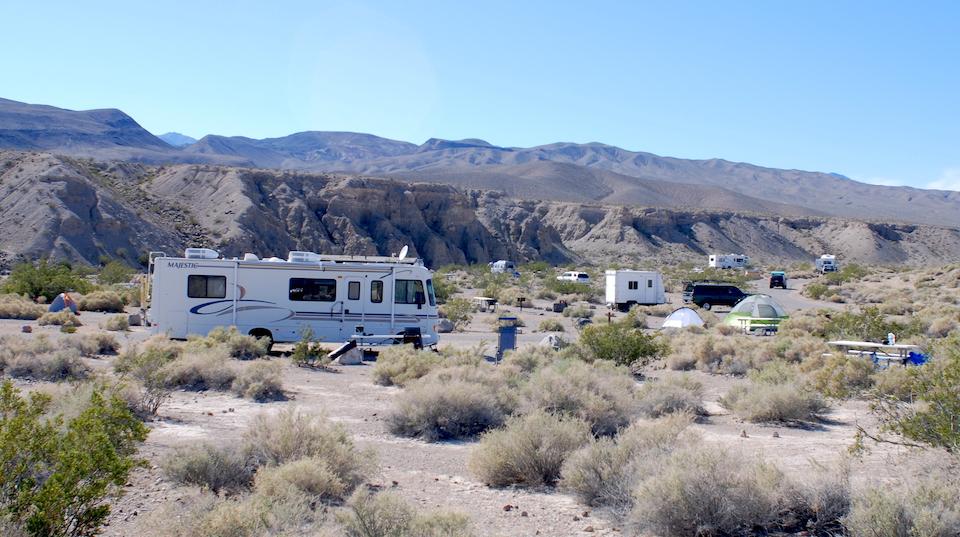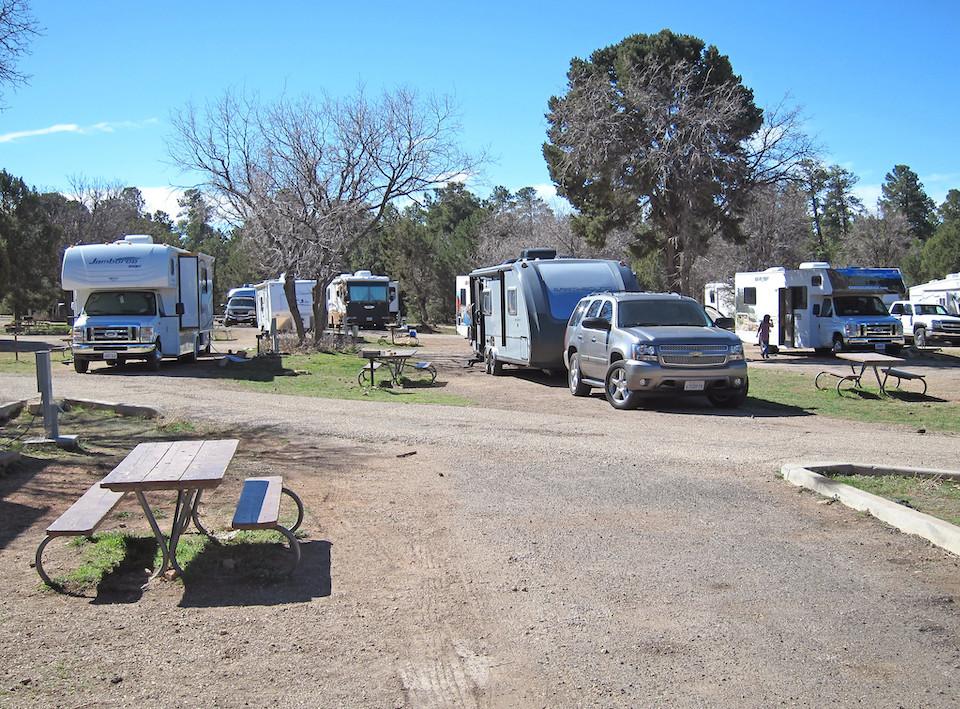When the coronavirus pandemic struck the U.S. last year, Monique “Neeki” Smith knew from her training in emergency medical services the country would pause. She scrapped foreign travel plans and hit the road in her pick-up truck with travel trailer attached, leaving behind a toxic relationship and hurricanes in South Florida.
Traveling since August, she has visited a slew of national parks, including Glacier, Mesa Verde, Canyonlands, Redwood, Lassen Volcanic, Yosemite, and Joshua Tree.
“I love it. I should have done this years ago,“ she said. “It’s like living on a sailboat” when the weather charts the course.
She stops to identify plants and hike, donning a mask on crowded trails. But instead of staying in national park campgrounds, she more frequently “boondocks” – a term describing camping with a recreation vehicle but without a connection to water, sewer or electric services. Boondocking on public land managed by the Bureau of Land Management is free. Private sites vary in price from $5-$15 a night -- significantly less than the cost to stay at national parks and RV campgrounds.
Nationwide, approximately 11 million households own a recreational vehicle, according to the RV Industry Association. Last year, RV shipments reached 430,412 wholesale units, a 6 percent increase over 2019, and the third best year on record despite a two-month industry shutdown due to the pandemic, according to a report prepared for the RV Industry Association.
“This past year with the pandemic even more people decided to get an RV,” said Phil Ingrassia, president of the National RV Dealers Association. “With Covid, you can be in your own bubble in your RV.”
RVs In Many Sizes And Styles
New RVs range in price and style. The least expensive trailer towed behind a vehicle costs about $6,000. In contrast, a Class A motorhome equipped with washer, dryer, king-sized bed, full size refrigerator, fireplace, and entertainment center goes for about $500,000.
But those traveling in Class A motorhomes do not stay in national parks.
“If you have a rig over 30 feet, national parks and some state parks cannot accommodate you," said Barbi Taylor. She and her husband, Larry, own a 25-foot-long Winnebago Navion. “We purposely got something smaller to get into the national parks,” she said.
Many national parks allow RVs and trailers, but some impose certain length restrictions based on road, traffic, and weather condition variables, said Cynthia Hernandez, a National Park Service public affairs specialist.
Nationwide, there are 8,585 spots for RVs at national park campgrounds. Amenities such as electric, water and sewer hook ups are usually listed on the park’s web pages, but Ingrassia believes the NPS campgrounds are inadequate.
The RV Industry Association supports wider, longer and level campsites, 50-amp electrical service, as well as hook ups for water, and modernized dump stations.
“Eisenhower-era campgrounds are not set up for RVs with slide out rooms,” said Ingrassia.
Slide-outs refer to sides that expand when parked. RVs are about 8 feet wide compared to an automobile up to 6.5 feet wide. Slides extend the living space from 1-3 feet on each side. So, an RV with slides open on both sides can be 14 feet wide.

Slide-outs increase the width of RVs and can require larger sites in park campgrounds/NPS files
Christopher Patterson, 32, agrees it’s easier to find a spot in a national park with a smaller RV. That’s why he purchased a “super nimble” 2015 Itaska Navion class c motorhome – about 3 inches longer than a Chevy Suburban -- for $85,000 in 2017. His RV doubles as his home and car; he’s been on the road almost full time the past 3.5 years driving slightly more than 30,000 miles annually. He budgets about $600 per month for camping and parking. Additional expenses include diesel fuel for his RV that gets from 12-15 mpg.
“I love to stay in national parks. They’re relatively inexpensive, costing $20-$30 a night,” he said. During the pandemic, he likes knowing his RV is “clean and sanitized at all times.”
In the winter, he chases the snow, looking for places to snowboard, like Breckenridge. He likes to stay in shape and plans to ski the backcountry this winter and take an avalanche rescue and awareness course. His favorite summer trip was to the Grand Canyon when he hiked 14.5 miles from the rim to the Colorado River and back in one day.
“It’s really easy to eat healthy on the road when you have a kitchen with you at all times,” he said.
His ex-girlfriend used to join him for 7-10 days at a time. But they split up in part because “we had different value systems. She wanted to be with me all the time. I wanted space and time by myself,” he said.
Like Patterson, Smith also enjoys being alone.
“I didn’t even know that I was going to enjoy my own good company so much," she said. She had to get over her fear of the dark and keeps an arsenal, including gun, bear spray, pepper gel spray, pocket pepper spray, and an airhorn, for emergencies.
Hauling An RV Takes Practice
Having driven firetrucks for the Montgomery County (MD) Fire and Rescue Service, she was surprised to learn her pickup truck and trailer require significantly more attention.
“Firetrucks don’t bend in the middle,” and do not have a hitch ball that turns when backing up, she said.
She cautions prospective buyers that her “studio apartment on wheels” requires lots of maintenance.
“Things always breakdown. About 70 percent of the time, you’re fixing stuff,” she said. Her roof leaked. The jack broke. She also spent two weeks installing solar panels that charge 12-volt batteries used to run the fan, refrigerators, lights. and other devices.
“I was sore and exhausted for a week, “ she said.

The exposure at Death Valley National Park, and glaring sun, can make an RV a great place to retreat to/Kurt Repanshek file
Retired educator Donna Woods-Stellman and her husband Felix have dealt with repairs too – they used their extended warranty to replace the generator, slide motor, and slide topper on their Class A motorhome.
They also re-did the kitchen to make it more functional, modified the bathroom, and replaced the flooring on the 2016 Motor Coach A.C.E. purchased new for $79,000.
“Once we remodeled the motorhome and got set up the way we wanted, it was awesome. Every time we move, I get a new backyard. Sometimes I have mountains, and ocean, or river but always home,” she said.
Since 2016, the couple has been on the road from three to six months annually, visiting 121 of 423 NPS units nationwide. They like to hike 2-3 miles daily and enjoy the wildlife, especially the moose and Dall sheep at Denali National Park in Alaska. Bison surrounded their RV at Wind Cave National Park in South Dakota.
In 2019, the retired couple drove 42,000 miles, traveling from Texas to Alaska, including 1,400 miles along the Alaska highway through the Yukon Territory to Fairbanks. On the return trip they zigzagged 14 times across the U.S. and Canada border from Montana to Maine.
In 2020, they hopscotched across the country, avoiding Covid-19 hot spots but stopping at historical spots, including the Birmingham Civil Rights and Freedom Riders National Monuments, as well as the Tuskegee Airmen National Historic Site and Horseshoe Bend National Military Park, among other places.
“When you know you are going to sleep in your own bed every night as opposed to a hotel or tent, it makes travel more enjoyable and less stressful,” said Woods-Stellman.

Some national parks, such as Grand Canyon, have separate RV campgrounds/NPS files
National park campgrounds are expected to benefit from the enactment last year of the Great American Outdoors Act providing funds for deferred maintenance. Additional support could come from concessions contract holders if policies are changed, said RV dealer representative Ingrassia. He also chairs the Outdoor Recreation Roundtable, a trade association that educates Congress.
“We have people willing to invest in infrastructure and getting things up to code,” he said, but concessionaires would like a 30- or 40-year-long contract. Existing law limits concession contracts to a 10-year-term that can be extended up to 20 years if significant construction and capital improvements are made.
The RV Industry Association advocates for Wi-Fi throughout national park campgrounds. But a campground trend analysis provided to the NPS last year by CHM Government Services found that Wi-Fi connectivity is a low priority for park visitors compared to restrooms and site improvements.
The study was included in the “NPS Second Century Campground Strategy,” guidelines released by NPS last year to support visitors and employees at NPS campgrounds.
“The recent campsite development plan out from the National Park Service balances the need for traditional campsites and calls to enlarge and improve RV sites. As long as the NPS continues to keep the mission of park service front and center to protect the resources, we think there can be a good balance for a variety of park users,” said Emily Douce, director operations and park funding, National Parks Conservation Association.
The guidelines, including a campground design guide, are still being developed. The NPS plans to release additional updates this spring.



 Support Essential Coverage of Essential Places
Support Essential Coverage of Essential Places







Comments
The NPS should be looking for ways to share some of their visitor fee money with BLM and Forest Service lands that are near National Parks because the BLM and FOrest Service lands are helping to carry the load of RV and tent camping use for the local National Parks,
Barbi Taylor'a comment shows her lack of experience.
i've camped in many national parks in a 40-foot Class A including Yellowstone, Yosemite, Zion, and Shenandoah.
Love the 1922 photo. Would be fun to see what vehicle was towing it.
There's at least one NPS campground I know of that's built for RVs. Pinnacles has a campground that used to be private and just outside of the park boundaries until it was purchased and added. They have electric hookups.
I hope they don't "upgrade" the parks to satisfy the few with enormous RV's . I want to camp in a campground, not a trailer park! We stayed at Yosemite in 2019. Fully half the restrooms were out of service. One campground had one faucet and one restroom building for over 100 campsites! Fix basic infrastructure! Let the giant rigs camp in some of the many National Park adjacent campgrounds that already sport the luxuries they demand. Keep our National Park campgrounds as they are but with functional badic necessities!
I'm rich; so I hike in and use a tent and a big foam mat. The next morning, I drink filtered water; eat a couple of oaty bars, and go fishing, catch-and-release of course.
Don't do it! I say upgrade the campgrounds so everyday people can use them. The class As are extreme and let them support the resorts. We have spent a lot of money outfitting our small class C with solar so we can off grid for a few days in the national parks. We use water sparingly and conserve on our use of wasteful products. We respect nature And our national parks. Many parks can't handle the traffic they are already seeing.
The NPS should open up changes to our National Park camping to public comment and use public comments to make changes in a democratic fashion rather than make changes by bureaucratic fiat.